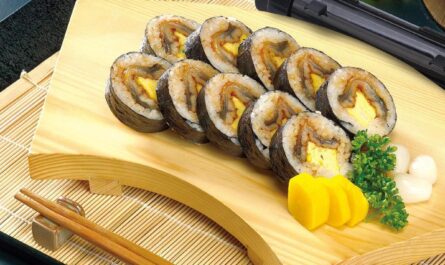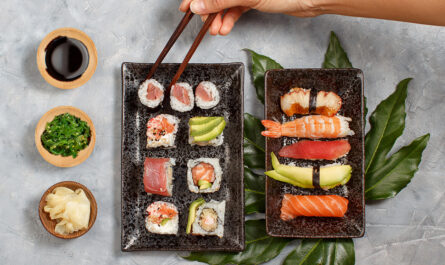The history of bamboo use in sushi is a fascinating journey that reflects both the evolution of culinary arts and the profound respect for natural materials in traditional Japanese culture. For sushi lovers, understanding this history not only enhances appreciation for the craft but also enriches the dining experience.

Introduction to Sushi and Bamboo
Bamboo has played a crucial role in the development of sushi equipment, illustrating the harmonious balance between Japanese cuisine and nature. From bamboo mats used in rolling sushi to bamboo leaves used for wrapping and decoration, each component has a story that is intertwined with the history of sushi itself.
Early Uses of Bamboo in Sushi
Dating back centuries, bamboo has been employed in Japan as a versatile material due to its abundance and sustainable properties. In the earliest days of sushi, bamboo was favored for its strength, flexibility, and natural antibacterial properties.
Bamboo Mats and Sushi Rolling
The most iconic use of bamboo in sushi making is the bamboo mat, traditionally known as a makisu. This tool allows chefs to roll sushi with precision, ensuring even pressure and consistent shapes. Over time, the technique of using the makisu has evolved, becoming an essential skill for sushi chefs worldwide. For more on this, visit bamboo mat care.
Bamboo as a Decoration and Tool
Bamboo has also been used decoratively in the presentation of sushi, enhancing both aesthetic appeal and cultural significance. Bamboo leaves were, and still are, used to wrap sushi, providing a natural and traditional touch believed to impact flavor positively.
Bamboo and its Significance in Japanese Culture
In Japanese culture, bamboo symbolizes resilience and adaptability. Its integration into culinary tools serves as a nod to these values, highlighting a deeper connection with nature and tradition.
Sustainability and Bamboo
Recognized for its fast-growing properties, bamboo is an eco-friendly choice. It regenerates quickly without the need for replanting, making it an ideal resource in sustainable culinary practices. This is especially important in today’s eco-conscious society as we look to maintain traditions responsibly.
Benefits of Bamboo in Sushi Preparation
Bamboo’s natural properties help mitigate humidity, control temperature, and stave off bacteria. This is advantageous in sushi preparation where freshness is paramount. Furthermore, bamboo tools are naturally non-stick, aiding in the delicate task of sushi assembly.
Evolution of Bamboo Utilization in Contemporary Sushi
While traditional methods using bamboo persist, modern adaptations continue to emerge. Many sushi chefs are now blending traditional bamboo tools with contemporary designs, reflecting both innovation and respect for tradition.
Challenges and Adaptations
Despite its advantages, bamboo in sushi making is not without challenges. Maintaining the integrity and cleanliness of bamboo tools requires care, as demonstrated in guides on avoiding mold on bamboo mats.
Modern-Day Usage and Alternatives
As the sushi industry globalizes, new tools and materials have been developed, sometimes using alternatives like plastic wraps. However, many still value bamboo for its authenticity and unique contribution to flavor and texture.
The Future of Bamboo in Sushi
The role of bamboo in sushi will continue evolving. The culinary community is increasingly aware of environmental impacts, frequently advocating for sustainable practices, and bamboo aligns with this vision. This ensures its continued relevance in sushi making.
Preserving Tradition through Education
Educating future generations on the significance of bamboo in sushi is vital to preserving this tradition. Many culinary schools globally incorporate traditional methods alongside modern techniques to provide chefs with comprehensive skills.
Consumer Preferences
Today’s consumers are more informed and selective. They appreciate authenticity and sustainability in their culinary experiences, positioning bamboo as a desirable choice due to its historical and environmental credentials.
Conclusion
The history of bamboo use in sushi is deeply rooted in the art of sushi making, representing a testament to Japan’s ingenious utilization of nature. For sushi enthusiasts, this history provides a richer context for enjoyment and a reminder of the intricate artistry involved in crafting sushi. For more insights, explore traditional sushi practices at sushi etiquette.

FAQs
What is the primary role of bamboo in sushi making?
Bamboo primarily serves as a tool for rolling sushi, using a bamboo mat known as a makisu, and as a decorative element through bamboo leaves.
Why is bamboo favored for its use in sushi?
Its natural antibacterial properties, sustainability, and aesthetic appeal make bamboo a prized element in sushi.
How does bamboo compare to modern sushi tools?
While modern tools offer innovations, bamboo remains preferred for its traditional value, environmental benefits, and contribution to the authentic sushi experience.
This article contains affiliate links. We may earn a commission at no extra cost to you.



